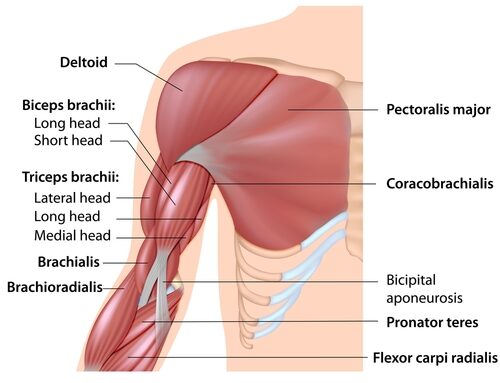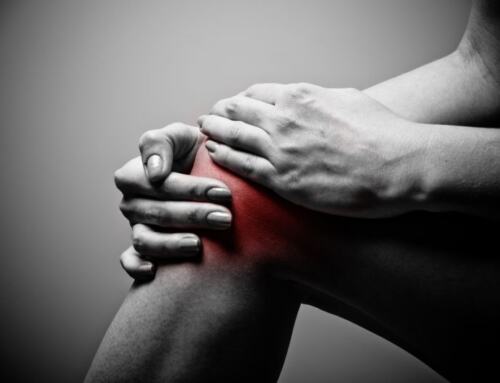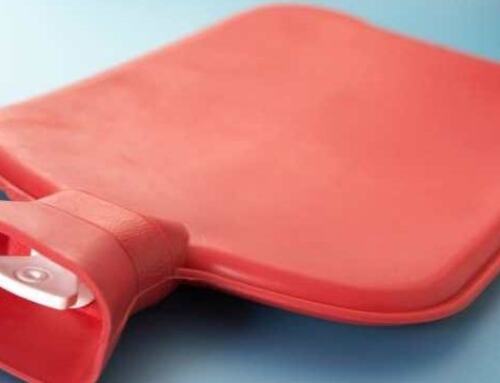The Subscapularis Muscle
Frozen Shoulder
Have you ever experienced pain so bad in your shoulder joint that you couldn’t move it? It got progressively worse until it was considered “frozen shoulder” or adhesive capsulitis.
The Subscapularis muscle is one of the four rotator cuff muscles. It sits between the shoulder blade and the ribcage. Its main job is to add stability to the shoulder joint capsule and medially rotate and adduct the upper arm bone. [The Supraspinatus is another rotator cuff muscle]

If you have trigger points in this muscle, you will feel pain in the back of the shoulder, the back of the armpit, down the arm, and around the wrist (like a bracelet of pain).
One of the main signs of problems in this muscle is that you can not fully turn up your palm. You will also be unable to reach back with the “throwing a ball” motion. If it progresses fully, you won’t have much range of motion.
People between the ages of 40 and 60 years old who have diabetes are the most at risk for developing frozen shoulder.
The Anatomy of the Subscapularis Muscle
The subscapularis muscle is the largest and strongest muscle of the rotator cuff, playing a vital role in shoulder movement and maintaining shoulder joint stability. It can be found at the front of the shoulder blade, originating at the medial and lower two-thirds of the groove on the lateral border. The triangular muscle transitions to a tendon, which attaches to the upper arm bone, with some fibers extending to the bicipital groove and greater tubercle.
A bursa, or a small sac of fluid, cushions the subscapularis muscle from the surrounding bones. Other rotator cuff muscles like supraspinatus, infraspinatus, and teres minor insert into the greater tubercle. When the subscapularis muscle contracts, it causes internal or medial rotation of the upper arm bone, a unique function that only it possesses among the rotator cuff muscles. In certain positions, this muscle also helps with adduction and extension functions while preventing anterior displacement of the humerus.
Phases of Frozen Shoulder
Freezing: You will gradually experience more pain until the shoulder capsule starts freezing and you lose range of motion. This phase lasts from 6 weeks to 9 months.
Frozen: Pain symptoms may go away, but the stiffness remains. This stage lasts 4-6 months.
Thawing: The range of motion slowly starts to return. Getting a full range of motion back typically takes six months to 2 years.
How Frozen Shoulder Occurs

Here’s how the trigger points that create frozen shoulder get there in the first place:
1. You’re out of shape, but all of a sudden, you decide to pitch a bunch of balls to your kid or swim a bunch of laps.
2. You did a bunch of kettlebell swings or some similar movement.
3. You reached back to catch yourself in a fall.
4. You dislocated your shoulder.
5. You fractured your humerus.
6. You held your shoulder in one position for waaaaay too long.
Visit the Doctor
To diagnose a frozen shoulder, your doctor will perform a physical exam to test your range of motion in your ball-and-socket joint. They will also perform imaging tests such as an X-ray or MRI to rule out problems like arthritis or a rotator cuff tear.
To fix subscapularis muscle pain, you must focus on two things: how you sleep and your posture.
Treatment for Frozen Shoulder Pain
Your doctor may suggest a steroid injection, NSAIDs, physical therapy, or even surgery to help relieve the symptoms and pain. But before you visit the physical therapist, see us at Body Ache Escape for a massage. To help with a frozen shoulder, we may need to perform several massages, but massage does work!
How to Fix The Pain
Since you will probably be sleeping on the not-painful side, hug a pillow to prevent the subscapularis muscle from entering a shortened position. That’s bad.
Do not slump! Avoid the forward shoulder and head posture. Rest your arm on the other seat’s headrest to stretch out when you’re in the car. Don’t let your shoulders sit still for too long. Keep them moving.
One exercise you can easily do to help stretch out the subscapularis is from a standing position lean over and let your arm dangle. Now do little circles. If you want to be daring and add a light weight that would be beneficial. Try these range of motion exercises and stretches as well.
Here is an extensive list of different healing methods you can try at home:
- Stretching and Mobility Exercises: Gentle stretches like pendulum swings, towel stretches, and passive arm raises can improve mobility.
- Heat and Ice Therapy: Alternate between heat (to relax muscles) and ice (to reduce inflammation) for optimal results.
- Self-Massage Tools: Use a foam roller, massage ball, or even a tennis ball against a wall to release tension in the shoulder muscles.
- Acupressure Mat: Lying on an acupressure mat can stimulate blood flow and relieve muscle stiffness.
- Epsom Salt Baths: Soaking in a warm Epsom salt bath can help reduce inflammation and ease pain.
- Gentle Yoga or Tai Chi: These low-impact practices focus on improving flexibility and can help restore range of motion.
- Topical Analgesics: Applying creams or gels containing menthol, camphor, or capsaicin can provide temporary pain relief.
- Kinesiology Taping: Applying kinesiology tape can help support the shoulder, reduce pain, and improve mobility.
- Home Ultrasound Devices: These can help reduce inflammation and promote healing deep within the tissues.
- Essential Oils: Massaging the shoulder with essential oils like peppermint, lavender, or eucalyptus can reduce pain and inflammation.
- Anti-inflammatory Diet: Incorporating foods like turmeric, ginger, and omega-3-rich foods (fish, flaxseed) may help reduce overall inflammation in the body.
- Posture Correction Devices: These can help maintain proper alignment, preventing further strain on the shoulder.
- Guided Meditation for Pain Relief: Practicing mindfulness or guided meditation can reduce the perception of pain and help with relaxation.
- Contrast Showers: Alternate between hot and cold water during a shower to improve circulation and reduce muscle tightness.
- Hormones: Get your hormones tested. Frozen shoulder can be a sign of imbalanced hormones.
A massage can work wonders for a frozen shoulder. Releasing those trigger points around the shoulder can relieve your stiffness and pain. Please schedule your massage today! 614-604-6358







